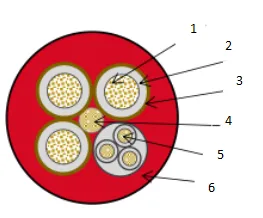12 月 . 03, 2024 17:05 Back to list
Air Pressure Safety Valve for Enhanced System Performance and Reliability
Understanding Air Pressure Release Valves Essential Components for Safety and Efficiency
Air pressure release valves (APRVs) play a crucial role in various industrial and commercial applications, ensuring the safety and efficiency of systems that operate under significant pressure. These valves are designed to automatically release excess pressure from a system to prevent potential hazards such as explosions or equipment failure. In this article, we will explore the functionality, applications, and importance of air pressure release valves.
What is an Air Pressure Release Valve?
An air pressure release valve is a specialized type of valve that is used to maintain the pressure within a specific range in a closed system. When the pressure exceeds a predetermined limit, the APRV opens to release the excess pressure, thereby protecting the system from damage. This mechanism is particularly vital in industries where pressurized containers, pipes, or vessels are used, such as in chemical processing, oil and gas, and water treatment facilities.
How Do Air Pressure Release Valves Work?
The operation of an APRV is relatively straightforward. Each valve is equipped with a spring mechanism that is pre-set to a specific pressure level. When the internal pressure rises above this set point, the force exerted on the valve disc (or seat) overcomes the resistance of the spring, causing the valve to open. This action allows the pressurized air or gas to escape, which reduces the pressure within the system to a safe level. Once the pressure drops below the set limit, the valve automatically closes, preventing any further release.
Key Features of Air Pressure Release Valves
Several features make air pressure release valves an integral part of pressurized systems
1. Safety The primary purpose of APRVs is to enhance safety by preventing over-pressurization. This is particularly important in environments where an explosion or rupture could have catastrophic consequences.
2. Reliability High-quality APRVs are designed to operate effectively under various conditions. They are built to withstand extreme temperatures, corrosive substances, and continuous operation.
3. Adjustability Many APRVs come with adjustable settings, allowing operators to customize the pressure levels according to specific system requirements. This feature is particularly beneficial in systems that experience varying pressure levels during operation.
4. Maintenance Regular maintenance of APRVs is essential to ensure they function correctly. Operators should routinely inspect these valves for signs of wear and tear and make necessary adjustments or replacements as needed.
air pressure release valve

Applications of Air Pressure Release Valves
APRVs are used in various applications across multiple industries
- Chemical Processing In chemical plants, where reactions can produce gases that increase pressure, APRVs are essential to safely vent excess pressure and prevent accidents.
- Oil and Gas The extraction and transportation of oil and gas involve high-pressure systems. APRVs are crucial for managing the pressure in pipelines to avoid leaks and explosions.
- HVAC Systems In heating, ventilation, and air conditioning systems, APRVs help maintain optimal pressure levels, ensuring efficiency and comfort in commercial and residential buildings.
- Water Treatment In water treatment facilities, APRVs protect pipes and tanks from pressure spikes that can occur during chemical dosing and filtration processes.
The Importance of Air Pressure Release Valves
The significance of air pressure release valves cannot be overstated. They not only protect equipment and infrastructure from damage but also safeguard human life. In environments where pressurized systems are prevalent, the failure to implement APRVs can lead to severe consequences, including financial loss, environmental disasters, and personal injuries.
Moreover, regulatory bodies in many industries mandate the inclusion of safety valves to ensure compliance with safety standards. By incorporating APRVs, companies can achieve not only regulatory compliance but also operational efficiency by minimizing downtime due to equipment failure.
Conclusion
In conclusion, air pressure release valves are a vital component of any system that operates under pressure. Understanding their functionality and significance is crucial for anyone involved in industries where pressurized systems are prevalent. By ensuring that APRVs are properly installed, maintained, and adjusted, companies can operate safely and efficiently, protecting both their assets and personnel from the dangers associated with over-pressurization. As technology evolves, we can expect further advancements in valve design and materials, leading to even safer and more efficient pressure management solutions in the future.
Share
-
Understanding the Differences Between Wafer Type Butterfly Valve and Lugged Butterfly ValveNewsOct.25,2024
-
The Efficiency of Wafer Type Butterfly Valve and Lugged Butterfly ValveNewsOct.25,2024
-
The Ultimate Guide to Industrial Swing Check Valve: Performance, Installation, and MaintenanceNewsOct.25,2024
-
Superior Performance with Industrial Swing Check Valve: The Essential Valve for Any SystemNewsOct.25,2024
-
Industrial Swing Check Valve: The Ideal Solution for Flow ControlNewsOct.25,2024
-
You Need to Know About Industrial Swing Check Valve: Functionality, Scope, and PerformanceNewsOct.25,2024